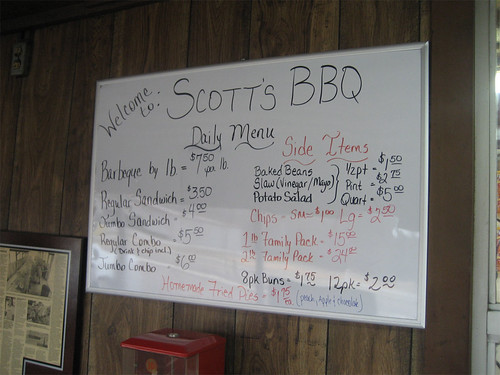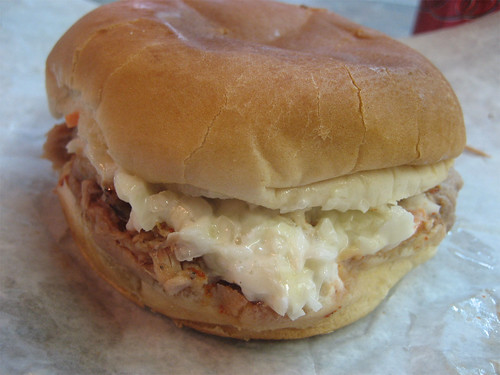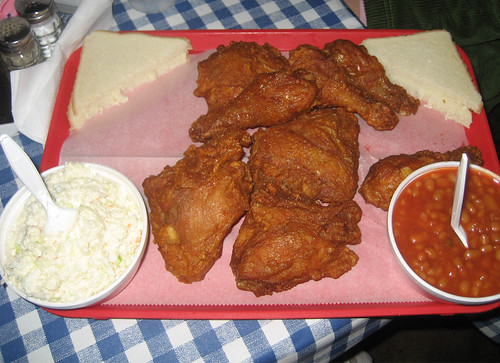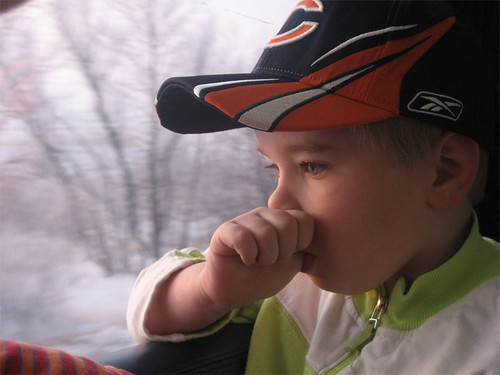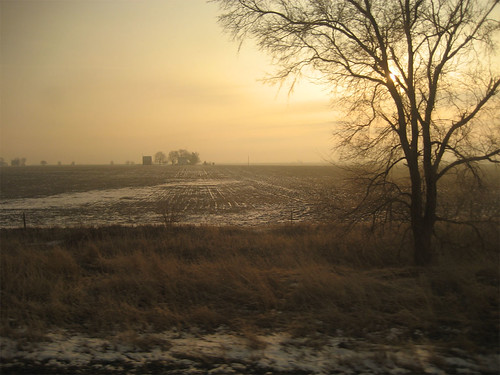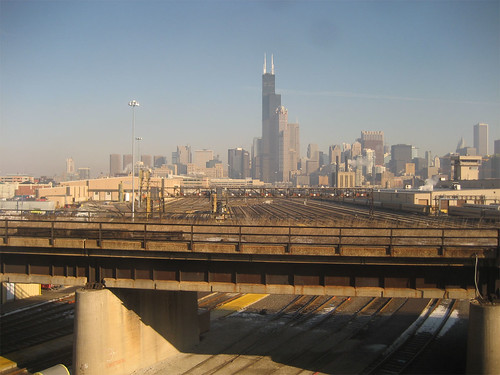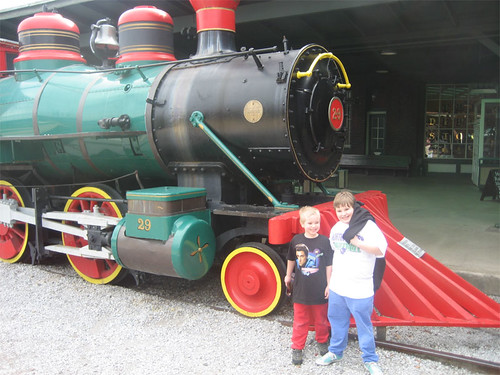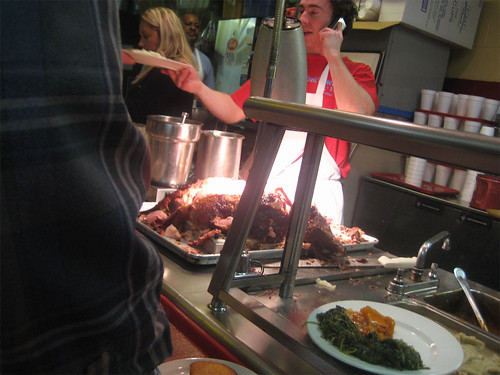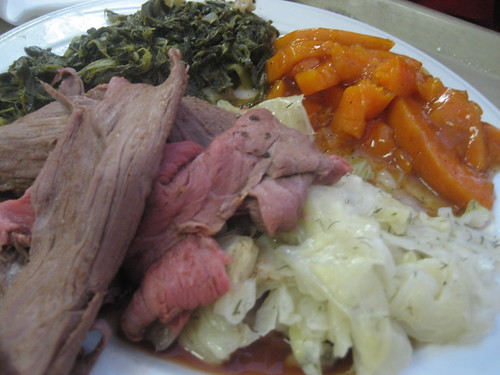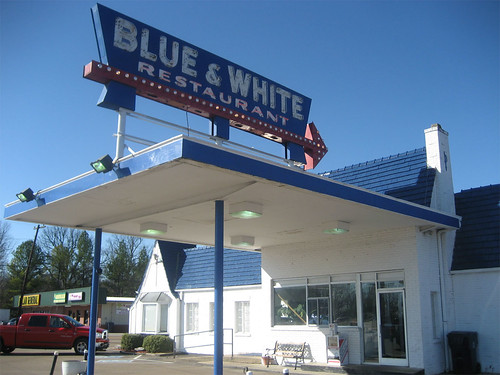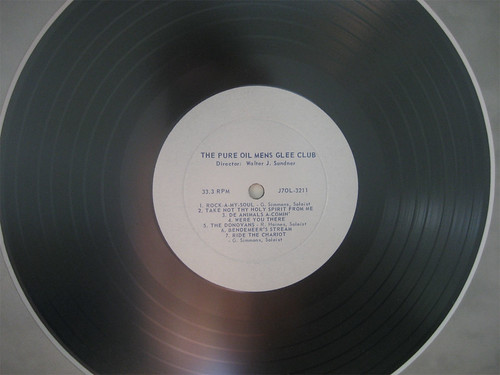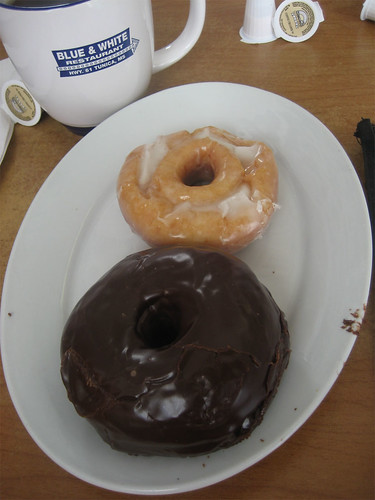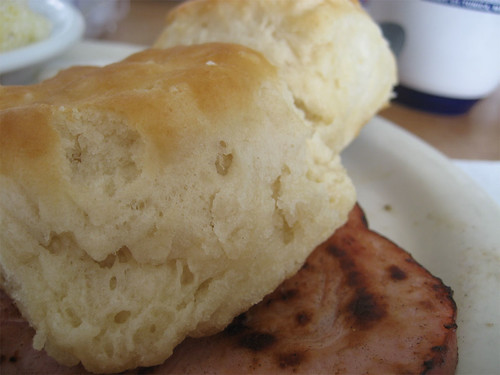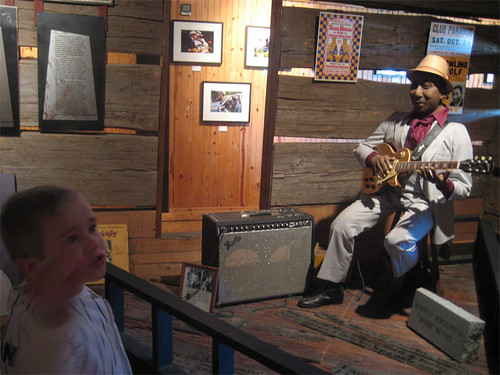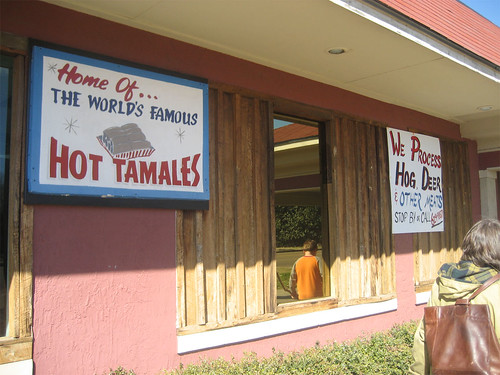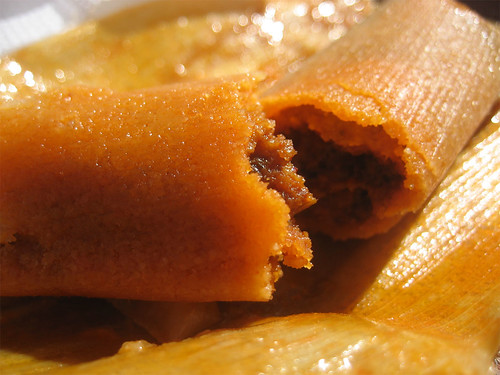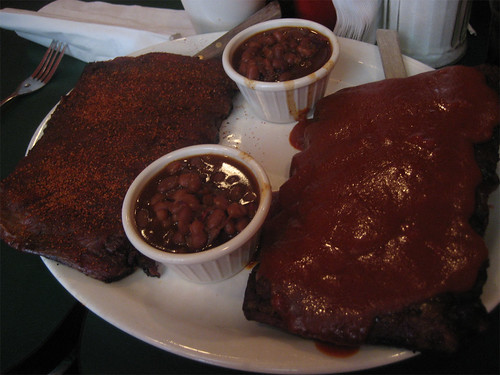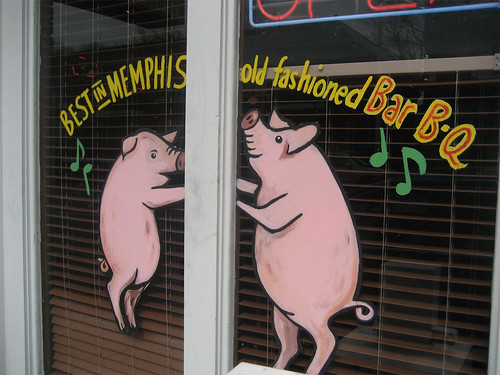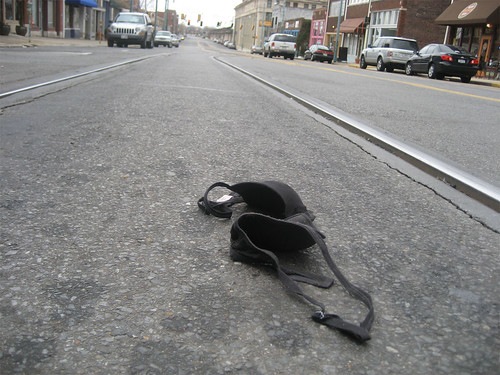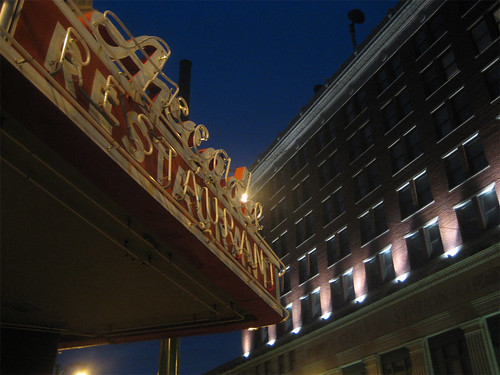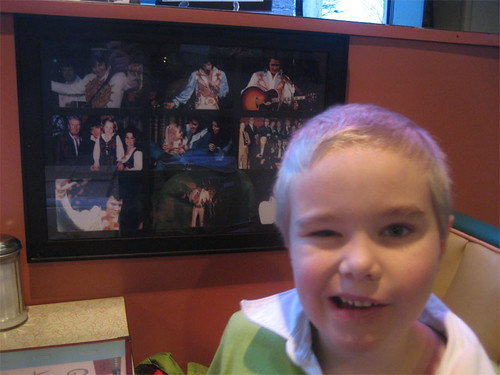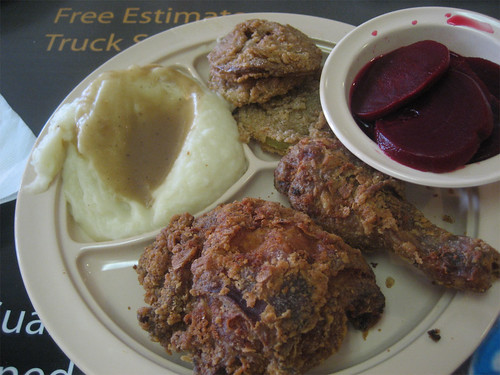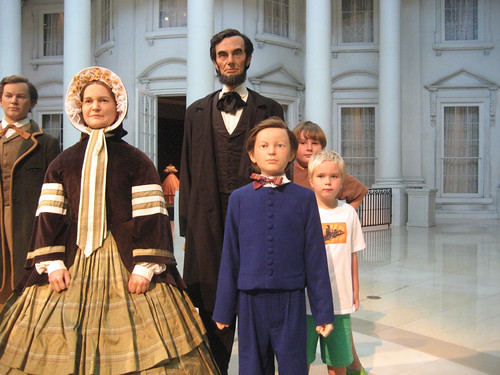
Here were the restaurants within walking distance of our motel in Springfield: Applebee’s, IHOP, Outback, Red Lobster, Panera, Long John Silver’s, Bob Evans, Jimmy John’s, Smokey Bones, Hooters, Cheddar’s, and Carlos O’Kelly’s.
In other words, at first glance you might think a visit to Springfield is a journey into deepest Generica. But in fact Springfield has a surprisingly healthy (well, in one sense of the term, anyway) local food culture, and given that it boasts several of the state’s major tourist attractions, the person who finds himself there anyway can certainly eat interestingly, if not exactly well, there.

The occasion was a history long weekend for ourselves and the kids. Within a couple of days we managed to see Lincoln’s log cabin days in the rustic, WPA-era reconstruction in New Salem, trace his life and presidency at the high tech, Disneyfied (but quite captivating) Abraham Lincoln Museum, see his tomb in the classically grandiose, Gilded Age memorial at Oak Ridge cemetery, and walk through his rather overdecorated Victorian home (as so often, it’s the most modest and homey historical site that gives you the real lump in the throat, as you think… that’s the desk where he sat and wrote his side of the Lincoln-Douglas debates, that’s the house he said goodbye to as he went off to become the Lincoln of history).
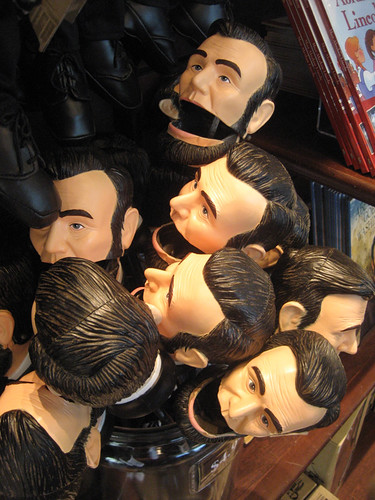
Oh, and we saw Frank Lloyd Wright’s Dana-Thomas House, an odd man out in an otherwise Lincolncentric weekend (though there is the connection of Lincoln Logs), but absolutely worth the tour for one of Wright’s most exquisite, Arts-and-Crafts-meets-Shinto-temple spiritual architecture experiences. And on the way back, we visited Cahokia, once the largest city in North America (this was about 1200 A.D.), and still an impressive mound of earth which manages to evoke, despite encroachment by modernity on every side, what a thriving mesoamerican village on the outskirts of East St. Louis might have been like.

But the mention of spiritual experiences naturally will bring to mind the fact that Springfield is the birthplace of the corn dog, so let me turn now to food. Things we ate in Springfield:
Gabatoni’s— Saputo’s is the Italian place people usually talk about, and some place called Vic’s usually scores highest for pizza in local polls, but this also received high marks, so we gave it a try. It’s a perfect south-side Vito & Nick’s-type pizza place, undisturbed 60s-style Eyetalian decor,
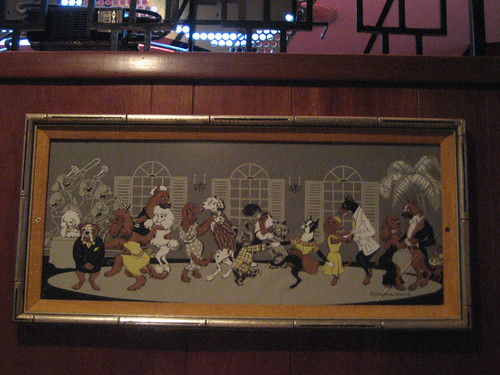
very good cracker-crust thin pizza,

and waitstaff that treats you like you’ve been coming in since you were a kid. Part of the reason I suspect that they treat you that way is because they’re largely undiscovered by out of towners, so be among the first– and treat ‘em nicely back.
300 E Laurel St
Springfield, IL 62703
(217) 522-0371
Mel-O-Cream— Some months back I had an outstanding seasonal-local-donut experience at the Greater Midwest Foodways Alliance presentation on midwestern sweets; one of the talks was on Sweetwater Donuts in Kalamazoo, and the highlight by far of the assortment brought down for us to try was donut holes made with bits of real Michigan cherries. I had no expectation that Mel-O-Cream, which noted donutologist Vital Info long ago had ranked as merely a middling donut mini-chain, would offer an experience to rival that– but then I saw peach donuts on offer, and grabbed the three they had as quickly as I could. Real peach chunks in season in cake donut batter— maybe Mel-O-Cream only goes from good to great for a few short weeks each summer when these peach donuts are in season, but if you have a chance, this is a donut almost worth the drive on its own.
(Various locations, which Cathy2 indefatigably catalogued here. Note that they’re open 6 to noon only.)
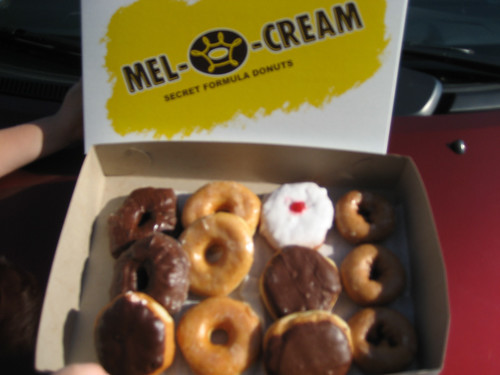
Cozy Dog— Inventor of the corn dog, I agree that this center for Route 66 fandom could use a dog that didn’t, as JeffB observed, taste so much of liquid smoke and chemicals, but it’s still pretty fine anyway.
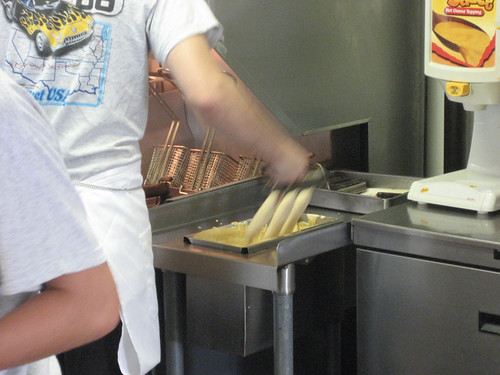

But as Vital Info noted, this is also a first-rate old school burger place, slapping fresh meat on the grill and cooking up fresh-cut fries; I took his advice and had the greasy all-meat chili on the burger and it was a first-rate dogwagon meal unchanged from 75 years ago.
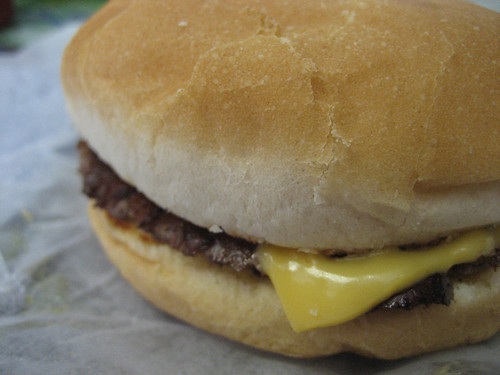
2935 S 6th St
Springfield, IL 62703
(217) 525-1992
www.cozydogdrivein.com
Coney Island— Speaking of chili from 75 years ago, this spot downtown has a great old “Since 1919” sign; the interior, alas, is redone, but the food seems unchanged, and here too a dog with all-meat chili and onions on it seemed like a perfectly preserved silent-movie-era meal.
219 S 5th St
Springfield, IL 62701
(217) 528-1193
Sgt. Pepper’s Cafe— I have to admit that the “horseshoe,” Springfield’s local specialty consisting of meat of your choice on toast, covered in French fries and a sharp cheddar sauce (traditionally tinged with mustard), sounded like bad drunk food to me. I had planned to accidentally forget to try one, but a comedy of errors trying to find a place that was actually open for lunch on Sunday put us at this Beatle-themed place where nothing sounded all that great. So I decided, might as well try one. And you know what? It was horrifying. It was a nightmarish culinary clusterfark of glop, rapidly cooling and setting like epoxy on my plate faster than I could have shoveled it into an undiscerning, alcoholically insensate mouth. Really, the vilest thing I have had his year, I have more sense than that even when I’m drunk, and yet people were eating it in the cold light of day.

Oh, but you didn’t have it at D’Arcy’s Pint, you say, or whatever place you think has the good ones. I grant you that Sgt. Pepper’s may have been a bad one, but nothing about what I had suggests that a good one is even possible. And if it is, someone else will be the one to discover it, not me.
3141 Baker Dr
Springfield, IL 62703
(217) 525-5939
Tags:
abraham lincoln,
corn dog,
hamburger,
horseshoe,
springfield



 Posted in
Posted in 












